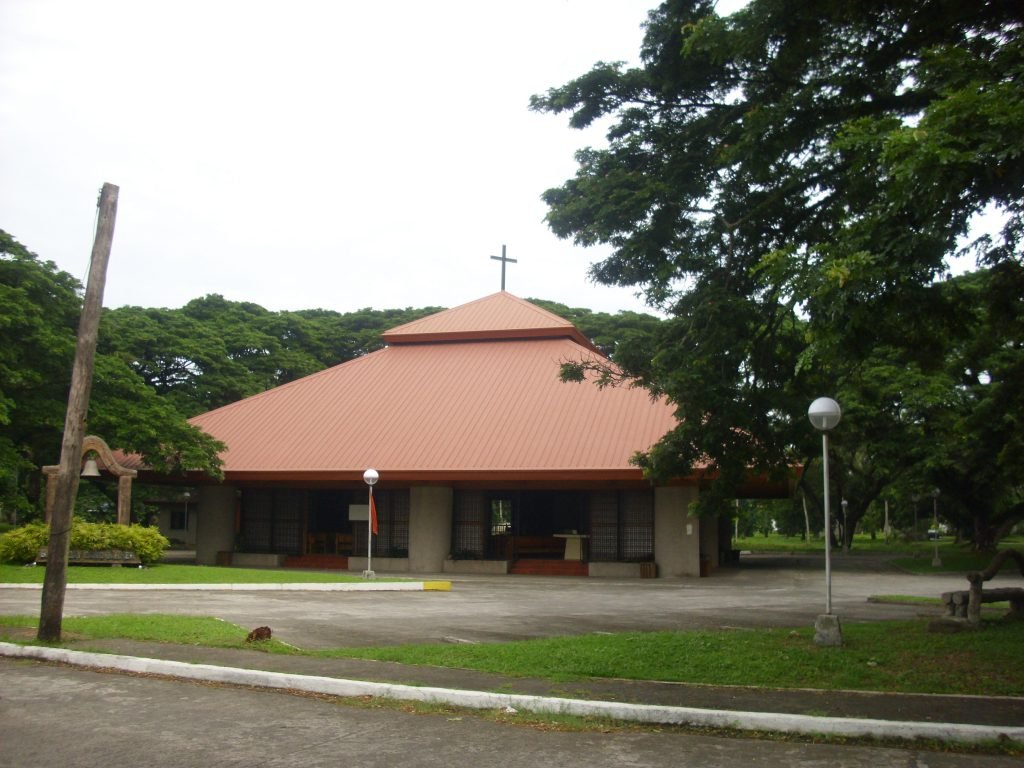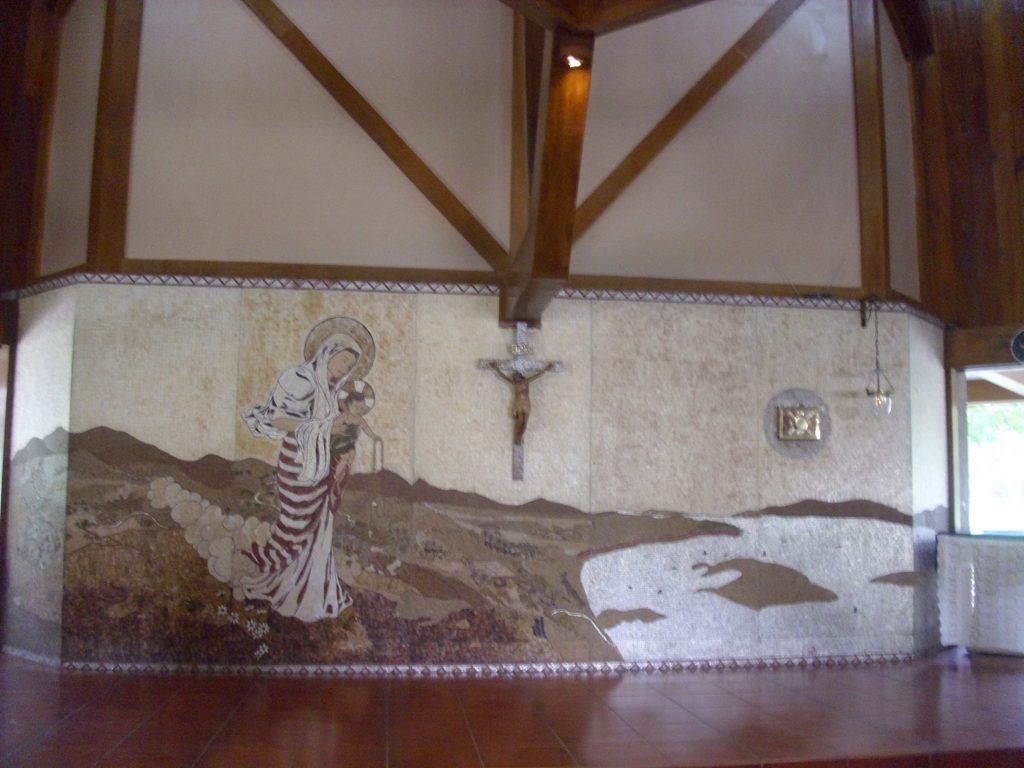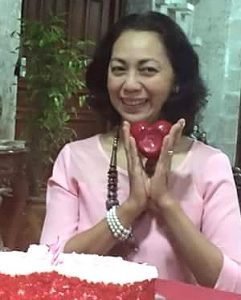From our seas come many treasures but, for me, these treasures become even more priceless when these are rare, unique and never to be duplicated either by nature or by human hands. Bacolod is one of the lucky cities where treasures from the sea are ensconced and securely at that on the walls of a chapel.

Whenever I gaze upon the marvelous mural at the altar of the Virgen sang Barangay Chapel at the Sta. Clara Subdivision, I always think of the grand dame of Philippine shell art. I could not think of anyone who had raise the art of shell craft to the level that Mrs. Leticia Sia Ledesma did our rich marine life.
The nine-foot by twenty-one-foot mosaic-mural so painstakingly reproduced from a painting by a leper from Jaro never ceases to amaze all visitors who go to the chapel. Not only do they get to see the mosaic but they get to see other shell art that make up the famous place of worship. The walls of the building are actually sliding doors made of capiz shells echoing the expansive windows of old Filipino houses. Foot-tall icons are delicately encrusted with crushed shells. The altar and the lectern are covered with creamy squares of capiz. The stations of the cross lining the walls are made of shells. The large frames of Divine Mercy and Our Lady of Guadalupe look like paintings but are actually intricate renditions in shells.
The Birhen sang Barangay Chapel at Sta. Clara Subdivision has long been a favorite destination for visitors. Shaped in the typical square Filipino house design, the chapel has accommodated churchgoers for a few decades and has been the site of countless christenings and weddings. This famous place of worship is just the rightful site for splendid works of art that were created with so much love and local talent you’ll be moved as I was when I once again met its creator Mrs. Leticia Ledesma. The famous mural of the Birhen sang Barangay at the altar, the religious images of saints, the way of the cross, Our Lady of Guadalupe, the Divine Mercy, and a few tables make up the artifacts that keep tourists coming in to visit.
I had the chance in 2013 to accompany the then 87-year-old Ilongga former Miss Leticia Sia to the Sta. Clara chapel with my fellow tour guides Bambi Borromeo and Raymond Alunan for the sole purpose of revisiting her masterpieces and explaining how all of these came about. She still has a sharp mind though one eye is dimmed by cataracts. She hobbles and needs assistance to get from here to there and tires easily. Yet, when she started talking about that time when her artistic talent was harnessed to the fore, her audience imagined the nimbleness of her fingers and the energy emanating from her mind and body as she undertook this most significant task in her career.
When the chapel was built in the early 80’s, Mrs. Ledesma became a natural choice to do the mural. Her business Shellcraft was a popular supplier of shell-based items. Doing the mural and the other works would make her name a legend. Mrs. Ledesma’s business, Shellcraft, was started in 1974 when a turn of events in her personal life caused her to find an alternative source of livelihood. What may appear to be just a business to others had actually become a passion for her. At her workshop in Tangub, little bowls and saucers filled with cut shells mostly in small squares and some as tiny as fingernail parings surround her latest project of an archangel wrestling with the devil. She demonstrates how difficult the task is. Only painstaking work fueled by passion can get the artist and her 60-man team to source and gather shells, pick the meat out of them, cure the shells, polish them, cut them and trim them to the desired sizes (the 9’ by 21’ mural has 95,000 pieces, the altar 16,000), make a lay-out for the design, and the final and even more meticulous and exacting assembly of materials to create the artwork.
The choice of shells came to Mrs. Ledesma when she saw people eating shellfish at the Central Market. She then knew that she would have to use the shells commonly found on the island. There were capiz shells, pink shells, rice shells, batad shells, turret shells, yellow shells, Japanese scallops, green shells, cup shells, baby mother-of-pearls and a variety of oysters. The undertaking starts first of all with gathering the right shells of the right color. Sometimes, some shell species are hard to come by especially after a reclamation of land from the ocean floor. As with most of her art pieces, shells are used in their natural color. Green shells or mussels are popularly used for foliage; mother-of-pearl to add shimmer. Pink shells are a must for flesh tones. Turret shells are perfect for Christ’s crown of thorns. Next comes the cutting which requires the experience of knowing which part of the shell to cut. Workers are trained to choose the part that can lie flat against the base. Cutting also requires precise measurements and the wrong size can throw a monkey wrench into the project. A ruined artwork has to be redone by either carefully picking out the offending piece and its neighbors, or by completely scrapping the work and starting anew. Before cutting, shells are soaked in ice water to soften them so as to prevent them from breakage curing cutting. Baby mother-of-pearls are used because these are easier to cut. The batad or pearly snails are gently washed with acid to bring out the pearly sheen. These are just a few of the tricks of the trade that Mrs. Ledesma discovered and applied to the project.

when she created this masterpiece in seashells
With excitement in her voice, she narrates how difficult it was to make the chandelier that is made up of 14,000 pieces of bleached cup shells arranged to trickle down from the ceiling resembling manna coming down from heaven. To make the chandelier, 30 sacks of cup shells were needed. The bivalves had to fit as a pair to make the 7,000 pairs visually perfect. 30 years later, she believes that only divine intervention prevented the shells from disintegrating and the nylon strings that held them together from breaking. The ones she still keeps in her bodega have gone brittle and are practically useless. “The chandelier is irreplaceable,” she said and added that it can never be repaired, too, referring to the rarity of the materials these days and the difficulty of the task. The stations of the cross at the Sta. Clara Chapel took 90 days while the mural took one year and four months with a twenty-man team.
Many other details elicit so much admiration – the crown of thorns of Jesus on the cross are small-sized turret shells encircling Our Saviour’s head; pink shells realistically make up the skin of the images to look like flesh; eyebrows, borders, and even hair are created from oyster shell trimmed to the size of a fingernail paring; the mural’s 2 1’2” x 1” bancas complete with passengers row across a mother-of-pearl Guimaras strait; the mother-of-pearl “sea” shimmers when sunlight hits it; and tiny huts and coconut trees echo the Filipino-ness of the mural while other vegetation recall the coastal areas of our islands. To capture the aerial views of Negros and Panay islands, Mrs. Ledesma had to take the now-defunct 15-minute flight from Bacolod to Iloilo and fly back to fully help her create in her mind the essence of the painting done by Crisogono Domingo to be interpreted in shells.

Seated in her plane seat, she’d quickly make sketches to capture the Filipino spirit that is essential to the making of the whole chapel. During the planning of the chapel, the architect Norman Campos and his wife Gigi, and Mrs. Ledesma agreed to volunteer their talent as labor of love under the conditions that the chapel shall be identifiable with the Birhen sang Barangay, and that it should be Filipino in design. Everything she does is a labor of love. In fact, after the shell pieces are lain, the frame refined, the artwork sprayed with a protective layer, and the whole piece ready for delivery, Mrs. Ledesma cried a little with each parting. For every work that she maked carried with it a little piece of her heart. Mrs. Ledesma has this to say without regret, “It was not a profitable endeavor but was a labor of love.”

